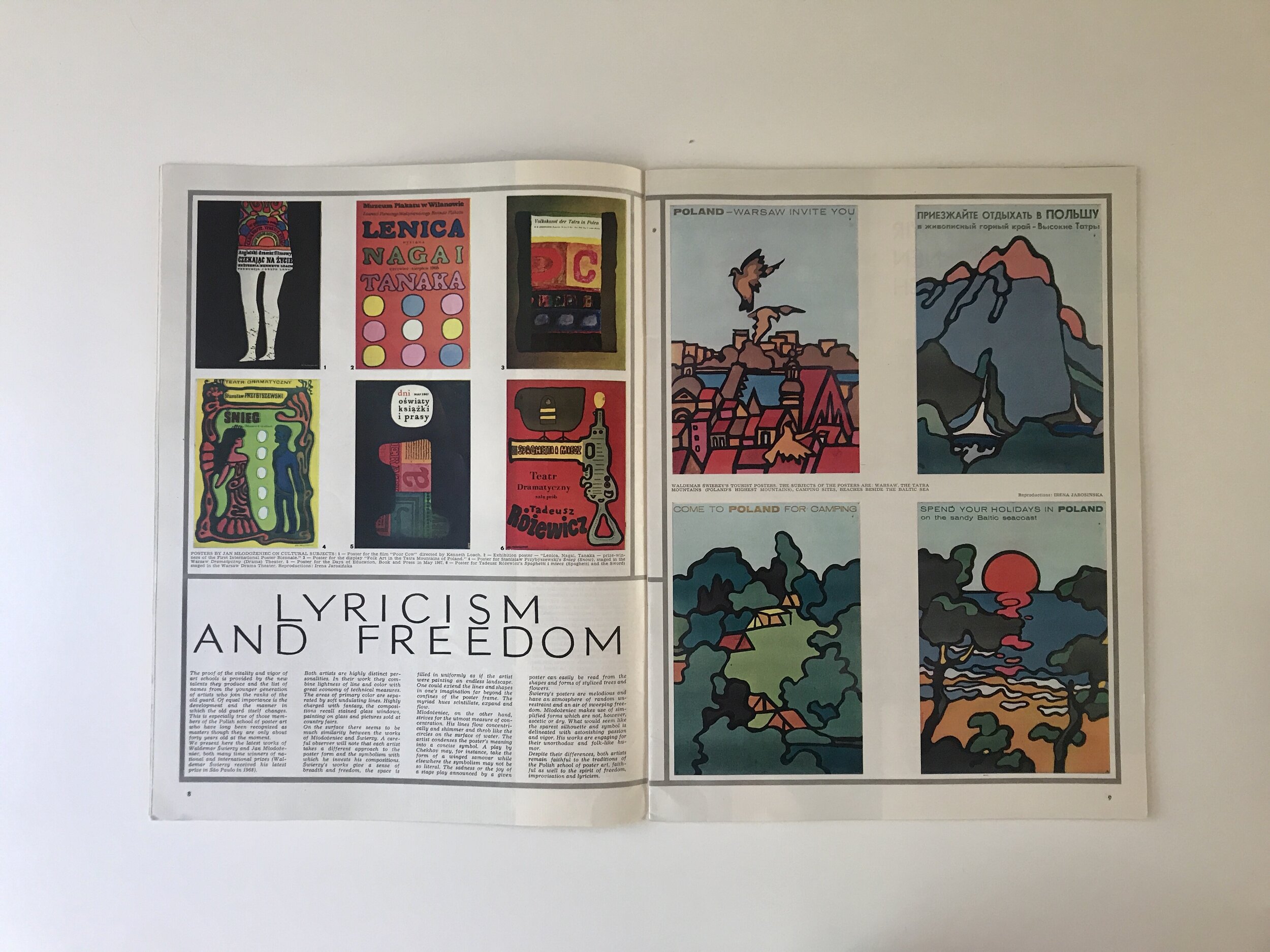Poland Magazine 1970: Lyricism and Freedom
Such a beautiful article in Poland / Polska magazine No.2 (186) - 1970
The proof of the vitality and vigor of art schools is provided by the new talents they produce and the list of names from the younger generation of artists who join the ranks of the old guard. Of equal importance is the development and the manner in which the old guard itself changes. This is especially true of those members of the Polish school of poster art who have long been recognised as masters though they are only about 40 years old at the moment.
We present here the latest works of Waldemar Swierzy and Jan Mlodozeniec, both many time winners of national and international prizes (Waldemar Swierzy received his latest prize in Sao Paulo in 1968).
Both artists are highly distinct personalities. In their work they combine lightness of line and colour with great economy of technical measures. The areas of primary colour are separated by soft undulating lines. Highly charged with fantasy, the compositions recall stained glass windows, painting on glass and pictures sold at country fairs.
On the surface there seems to be much similarity between the works of Mlodozeniec and Swierzy. A careful observer will note that each artist takes a different approach to the poster form and the symbolism with which he invests his compositions. Swierzy’s works give a sense of the breadth and freedom, the space is filled in uniformly as if the artist were painting on an endless landscape. One could extend the lines and shapes in one’s imagination far beyond the confines of the poster frame. The myriad hues scintillate, expand and flow.
Mlodozeniec, on the other hand, strives for the utmost measure of concentration. His lines flow concentrically and shimmer and throb like the circles on the surface of water. The artist condenses the poster’s meaning in to a concise symbol. A play by Chekhov may, for instance, take the form of a winged samovar while elsewhere the symbolism may not be so literal. The sadness or the joy of a stage play announced by a given poster can easily be read from the shapes and forms of stylised trees and flowers.
Swierzy’s posters are melodious and have an atmosphere of random unrestraint and an air of sweeping freedom. Mlodozeniec makes use of simplified forms which are not, however, ascetic or dry. What would seem like the sparest silhouette and symbol is delineated with astonishing passion and vigor. His works are engaging for their unorthodox and folk-like humour.
Despite their differences, both artists remain faithful to the traditions of the Polish school of poster art, faithful as well to the spirit of freedom, improvisation and lyricism.
Credit: Polska Magazine | Reproductions: Irena Jarosinska
JAN MLDOZENIEC POSTERS: 1. Poor Cow for Ken Loach film. 2. Exhibition poster for winners of the First International Poster Biennale. 3. Poster for ‘Folk Art in the Tatra Mountains. 4. Poster for Stanislaw Przybyszewski’s theatre production of ‘Snieg’. 5. Poster for the ‘Days of Education’, book and press May, 1967. 6. Poster for Tadeusz Rozewicz’s theatre production of ‘Spaghetti I miecz’
WALDEMAR SWIERZY’S TOURIST POSTERS: 1. Warsaw. 2. The Tatra Mountains. 3. Camping Sites. 4. Beaches beside the Baltic Sea



